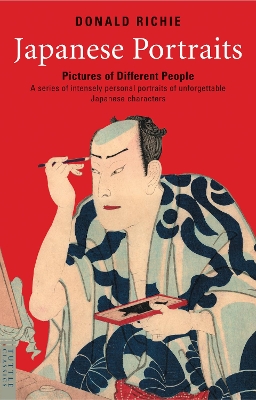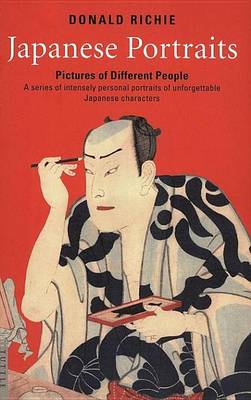Tuttle Classics
4 total works
This is a freaking great book and I highly recommend it... if you are passionate about the history of 'the world's greatest city,' this book is something you must have in your collection. JapanThis.com. Edward Seidensticker's A History of Tokyo 1867-1989 tells the fascinating story of Tokyo's transformation from the Shogun's capital in an isolated Japan to the largest and the most modern city in the world. With the same scholarship and sparkling style that won him admiration as the foremost translator of great works of Japanese literature, Seidensticker offers the reader his brilliant vision of an entire society suddenly wrenched from an ancient feudal past into the modern world in a few short decades, and the enormous stresses and strains that this brought with it. Originally published as two volumes, Seidensticker's masterful work is now available in a handy, single paperback volume. Whether you're a history buff or Tokyo-bound traveller looking to learn more, this insightful book offers a fascinating look at how the Tokyo that we know came to be. This edition contains an introduction by Donald Richie, the acknowledged expert on Japanese culture who was a close personal friend of the author, and a preface by geographer Paul Waley that puts the book into perspective for modern readers.
Tokyo from EDO to Showa 1867-1989
by Edward Seidensticker, Paul Waley, and Former Curator of Film Donald Richie
Published 10 December 2010
"These two volumes by Edward Seidensticker may well be the envy of every university press...desirable reading for amateur historians and tourists alike."-Thomas Stanley, Director of Walk Japan Limited
There can be few cities in the world that live, pulsate, and breathe through their geography as Tokyo does, few cities with a history that shifts through the creases of space as does that of Tokyo. This is particularly ironic in a city whose neighborhoods today hold few distinctive features and whose gentle topography has been all but obscured by batteries of building. But it was not always so, and what better way is there of writing Tokyo's history than by reflecting this shifting geography as neighborhoods prospered and declined while others, more aspirational, climbed up the socio-spacial ladder? This is precisely what Edward Seidensticker does in the pages of these books, brought together here together for the first time under one cover with numerous illustrations and an insert of beautifully colored Japanese woodblock prints of Tokyo from the era.
Tokyo: From Edo to Showa tells the story and history of Tokyo's transformation from the Shogun's capital in an isolated Japan to one of the most renowned modern cities in the world. With the same scholarship and style that won him admiration as one of the premier translators of Japanese literature, Seidensticker offers the reader his own brilliant picture of a whole society suddenly emerging into the modern world. By turns elegiac and funny, reflective and crisp, Tokyo: From Edo to Showa is an important cultural history of Asia's greatest city.
There can be few cities in the world that live, pulsate, and breathe through their geography as Tokyo does, few cities with a history that shifts through the creases of space as does that of Tokyo. This is particularly ironic in a city whose neighborhoods today hold few distinctive features and whose gentle topography has been all but obscured by batteries of building. But it was not always so, and what better way is there of writing Tokyo's history than by reflecting this shifting geography as neighborhoods prospered and declined while others, more aspirational, climbed up the socio-spacial ladder? This is precisely what Edward Seidensticker does in the pages of these books, brought together here together for the first time under one cover with numerous illustrations and an insert of beautifully colored Japanese woodblock prints of Tokyo from the era.
Tokyo: From Edo to Showa tells the story and history of Tokyo's transformation from the Shogun's capital in an isolated Japan to one of the most renowned modern cities in the world. With the same scholarship and style that won him admiration as one of the premier translators of Japanese literature, Seidensticker offers the reader his own brilliant picture of a whole society suddenly emerging into the modern world. By turns elegiac and funny, reflective and crisp, Tokyo: From Edo to Showa is an important cultural history of Asia's greatest city.
From the private musings of author Donald Richie, comes this extensive collection of brief written portraits which capture the personalities of 54 different Japanese people some famous, some notorious, and some unknown. Japanese Portraits, first written in 1987, presents one author's vision of Japanese culture and Japanese etiquette through precise, intimate profiles of both the ordinary and extraordinary people that make up the diverse nation. This collection of individual vignettes is perhaps the first book about the Japanese to view them entirely unhindered by the various theories about them, and about culture in Japan as a whole depicting them as complicated, simple, inscrutable, and understandable, like anyone else, yet still unique. In these fifty-four pieces you'll meet some household names Mishima, Kawabata, Mifune, Kurosawa and little-known neighborhood figures: the would-be geisha, the ex-boxer turned gangster, the scheming bar madame and the old man dying alone. And there are dozens of others, individuals who have in common, besides their Japanese nationality, the fact that they knew the author, and that fortunately for us he knew them. These highly personal reminiscences form one of the most original and deeply felt books on culture in Japan ever to appear.
The private recollections of longtime Japan resident, Donald Richie capture the personalities of certain Japanese people - some famous, some unknown - with insight and humour. Richie, who considers himself a foreigner despite living in Japan for over 53 years, is a keen observer of human nature. In "Japanese Portraits", he provides an elegant and perceptive vision of Japan through precise, intimate portraits of ordinary and extraordinary Japanese people. Portraits include such notable Japanese as acclaimed filmakers Akira Kurowasa and Yasujiro Ozu, famed novelist Yukio Mishima and celebrated actor Toshiro Mifune.



